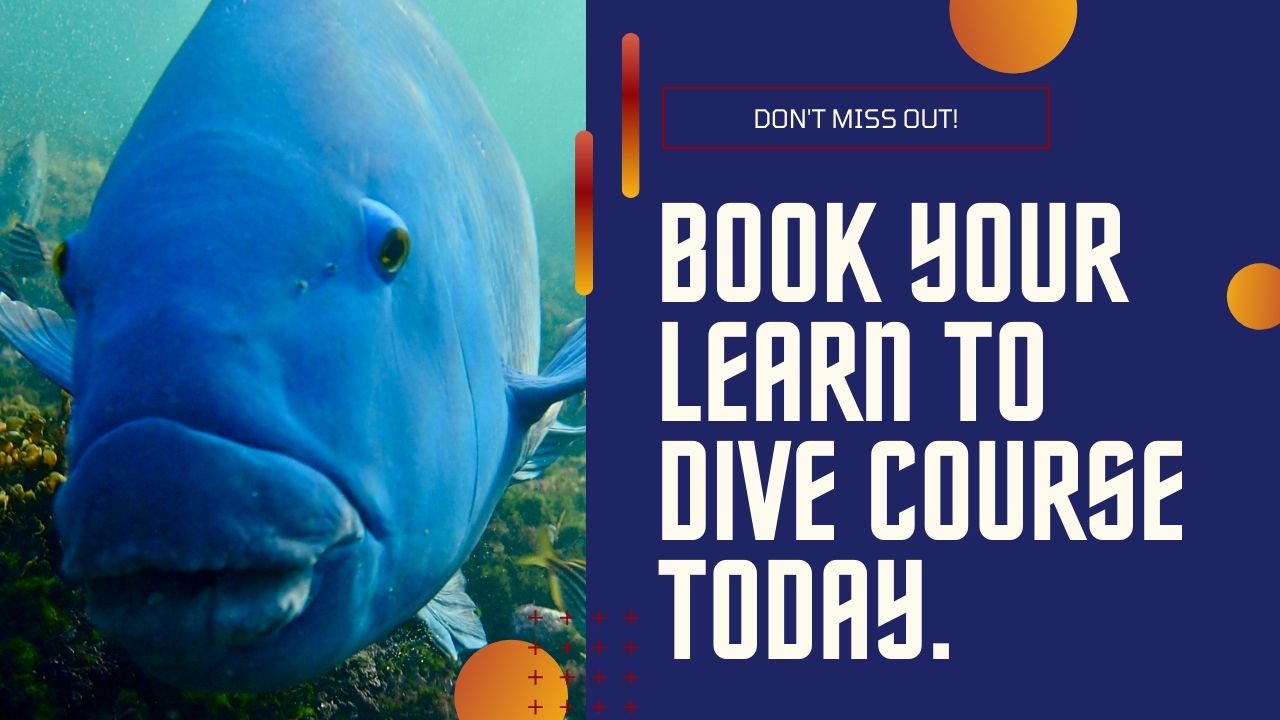You have 0 product(s) in your cart.
Abyss Scuba Diving
Diving Deeper Into The Acronym Of Scuba: A Comprehensive Breakdown
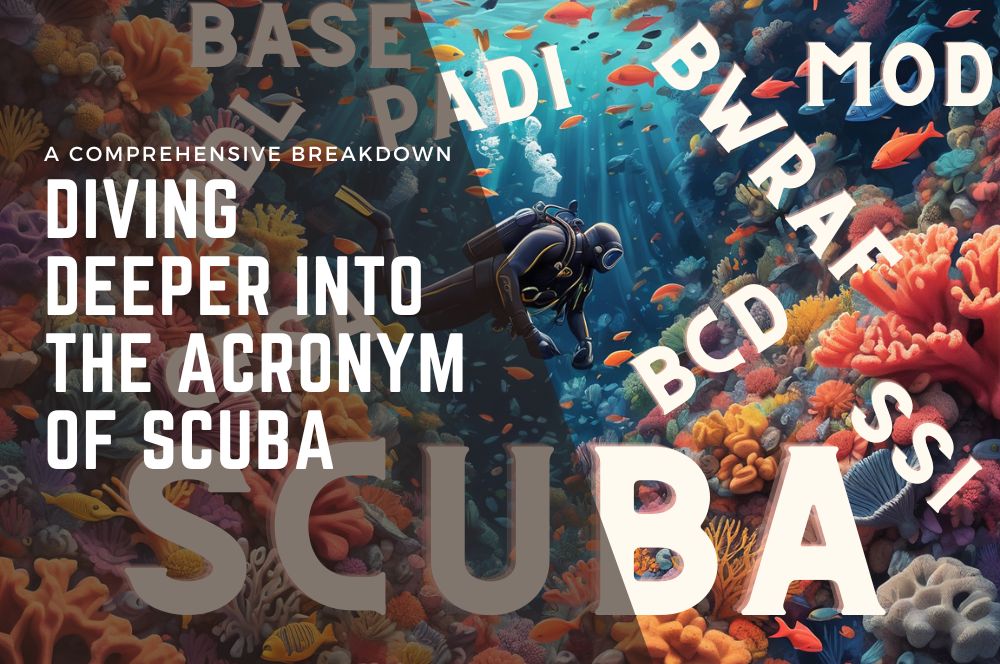
Diving Deeper into the Acronym of SCUBA: A Comprehensive Breakdown
The acronym of SCUBA stands for Self-Contained Underwater Breathing Apparatus, a term widely recognized in the world of diving. In this article, we aim to answer what exactly the acronym of SCUBA means, uncover its origins, and describe how the acronym became synonymous with underwater adventure. Discover the significance of each component of the acronym of SCUBA and how it fits into the broader narrative of diving.
Key Takeaways
-
SCUBA, standing for Self-Contained Underwater Breathing Apparatus, was coined by Dr. Christian Lambertsen in 1952, originally developed for military use and has become foundational in recreational diving as well.
-
Diving acronyms play a critical role in dive planning, safety, and underwater communication, offering a systematic and efficient way to remember vital information for every diver
-
Acronyms like PADI (Professional Association of Diving Instructors) and SSI (Scuba Schools International) are central to diver education and certification, representing diverse training levels and certifications that divers can earn.
Deciphering SCUBA: The Origin of the Term
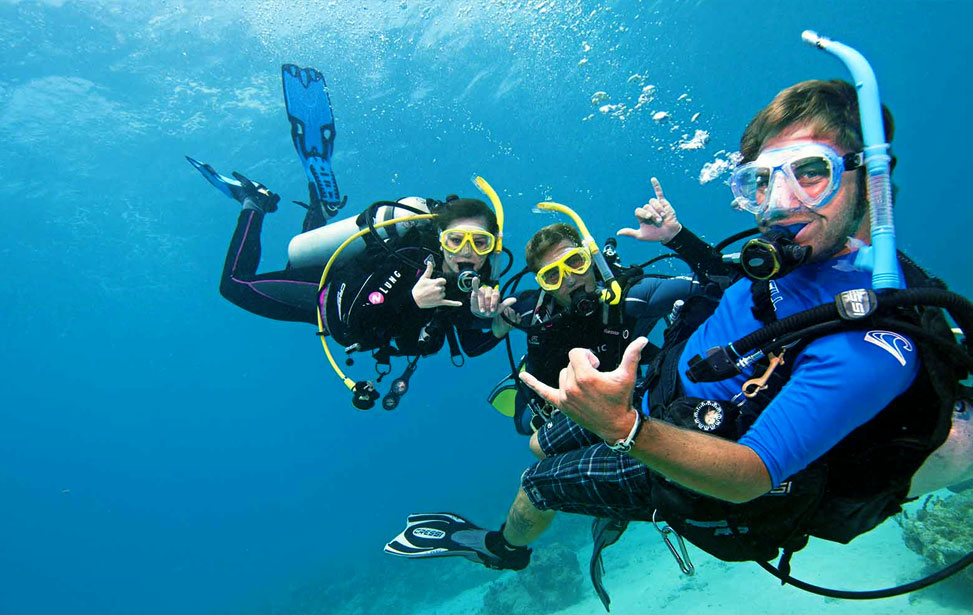
Let’s start at the very beginning, with the word that started it all: SCUBA. This familiar term, which rolls off the tongues of divers worldwide, has a rich history rooted in innovation and warfare. SCUBA, or Self-Contained Underwater Breathing Apparatus, was developed by Dr. Christian Lambertsen, a name synonymous with the evolution of modern diving.
Lambertsen’s invention, the lambertsen amphibious respiratory unit, was a game-changer during World War II, empowering divers to remain undetected during underwater missions and paving the way for the recreational diving we know today. It was in 1952, in a paper for the National Academy of Sciences, that Lambertsen first officially coined the term ‘SCUBA’ as we know it. From navy seals to recreational divers, the SCUBA technology has ever since been a cornerstone in exploring the underwater realm.
Fast forward to the present day, and the SCUBA acronym has taken on a life of its own. For the millions who don their gear and plunge beneath the waves, ‘SCUBA’ is more than just a term. It’s a ticket to an extraordinary world, a world that’s there to be discovered by anyone willing to take the plunge and discover scuba diving.
Breaking Down the SCUBA Acronym
Let’s take a closer look at what SCUBA truly stands for. Each letter holds a key to the wonders and challenges of underwater exploration. The ‘Self’ signifies the diver’s independence from surface air supply, enabling free movement underwater and the ability to explore the marine world unhindered. With a scuba stand, divers can prepare their gear efficiently before embarking on their underwater adventure.
The ‘Contained’ refers to the closed-circuit nature of the equipment, ensuring that exhaled gases do not escape into the water, but are contained within the system. The ‘Underwater’ element, as you might guess, refers to the subaquatic environment, a realm where the SCUBA gear allows us to move freely and explore, including swimming underwater.
The ‘Breathing’ element underscores the critical function of providing breathable air to the diver, enabling us to fill our lungs even under the pressure of the deep. Finally, the ‘Apparatus’ component encompasses all pieces of equipment designed for underwater respiration, from the mask and regulator to the tanks and valves that make up our lifeline beneath the waves. Quite a lot to pack into five letters, isn’t it?
Essential Scuba Diving Acronyms Every Diver Should Know
As we delve deeper into the language of diving, you’ll soon realize that SCUBA is just the tip of the iceberg. From equipment and safety protocols to training and certifications, there’s an acronym for almost everything in the diving world. And they’re not just handy shorthand.
These acronyms offer a systematic and efficient way to remember vital information, making them a key component of every diver’s toolkit.
BASE – Buoyancy, Awareness, Streamlining, Equipment
Dive into the Avelo dive system, and you’ll encounter the BASE acronym, a cornerstone of dive planning and execution. Let’s dissect this term to understand its components better. ‘Buoyancy’ plays a critical role in a diver’s ability to control their position in the water and conserve energy. It’s all about finding that sweet spot where you’re neither sinking nor floating, but effortlessly gliding through the water.
The ‘Awareness’ component speaks volumes about the mental aspect of diving. It’s about understanding your surroundings, staying vigilant about your air supply, and recognizing potential hazards. ‘Streamlining’, the third element of BASE, emphasizes the importance of reducing drag and optimizing both your body position and equipment setup for efficient movement underwater.
Last but not least, ‘Equipment’ highlights the importance of selecting, maintaining, and properly using dive gear to ensure functionality and enhance safety during dives. From your mask and fins to your BCD and regulator, each piece of equipment plays a vital role in your dive and should be treated with care.
RNT – Residual Nitrogen Time
Next up in our acronym exploration is RNT, or Residual Nitrogen Time, a crucial concept for planning repetitive dives. After a dive, a certain amount of nitrogen remains in a diver’s body. This residual nitrogen needs to be considered when planning your next dive to stay within the no-decompression limits and ensure safety.
The amount of residual nitrogen in your body affects your subsequent dive’s allowable depth and time limit. It’s a delicate balance to strike, but understanding your RNT is vital for planning safe and enjoyable dives.
MOD – Maximum Operating Depth
Another acronym that plays a significant role in dive planning is MOD, or Maximum Operating Depth. This refers to the deepest depth to which a diver can safely dive, considering the specific breathing gas mixture being used.
The determination of the MOD depends on the partial pressure of oxygen in the breathing gas mix and the maximum safe partial pressure limits for oxygen exposure. By understanding your MOD, you can plan your dives to the right depth, ensuring you’re diving safely and responsibly.
The Role of Acronyms in Dive Safety
Beyond dive planning, acronyms also play a pivotal role in ensuring dive safety. From pre-dive safety checks to emergency procedures, acronyms serve as mnemonic devices to ensure all necessary checks are performed and risks are managed effectively.
Take, for instance, the acronym BWRAF, which stands for:
-
Buoyancy
-
Weights
-
Releases
-
Air
-
Final Check
This is a systematic pre-safety check performed before every dive to ensure all gear is functioning correctly and the diver is ready to submerge.
Then, there’s CESA, or Controlled Emergency Swimming Ascent. This is an emergency skill taught during the open water course for situations where a diver may run out of air. These acronyms are not mere jargon, but lifelines, ensuring that every dive is a safe dive.
Navigating Training and Certifications: Acronyms Unveiled
As you delve deeper into the world of scuba diving, you’ll encounter a host of acronyms related to training and certification. From AD (Adventure Diver) to AI (Assistant Instructor), these acronyms denote different training levels and certifications, giving divers a universally recognized way to identify their skills and expertise.
PADI – Professional Association of Diving Instructors
One of the most recognized acronyms in the world of scuba diving is PADI, which stands for the Professional Association of Dive Instructors. Operating in 186 countries with over 6,600 dive centers, PADI has a significant global footprint and is a leader in diver education and certification.
PADI’s mission extends beyond education and training, focusing on creating a billion ocean advocates to safeguard and explore our oceans. They offer a diverse range of courses, including:
-
Open Water Diver
-
Advanced Open Water Diver
-
Rescue Diver
-
Divemaster
-
Specialty courses like wreck diving, underwater photography, and night diving
Maintaining high standards in dive training and safety is a cornerstone of PADI’s philosophy, coupled with a strong dedication to environmental conservation. PADI is not just a certification agency but a community committed to the protection and exploration of our oceans.
SSI – Scuba Schools International
Another popular training agency is Scuba Schools International, known by the acronym SSI. Much like PADI, SSI offers a variety of diving courses and certifications, catering to a wide range of interests and skill levels. From beginner courses to advanced technical diving, SSI provides comprehensive training for divers at every stage of their journey.
SSI emphasizes a personalized approach to training, allowing divers to learn at their own pace. They also place a strong focus on practical skills, including:
-
Proper buoyancy control
-
Navigation techniques
-
Emergency procedures
-
Dive planning and execution
This ensures that divers are well-equipped to handle a wide range of diving scenarios.
Whether you’re a novice diver looking to hone your skills or an experienced diver seeking new challenges, SSI offers a pathway for continuous learning and improvement. After all, in the world of diving, there’s always more to explore.
Gear Up: Understanding Your Scuba Equipment Acronyms
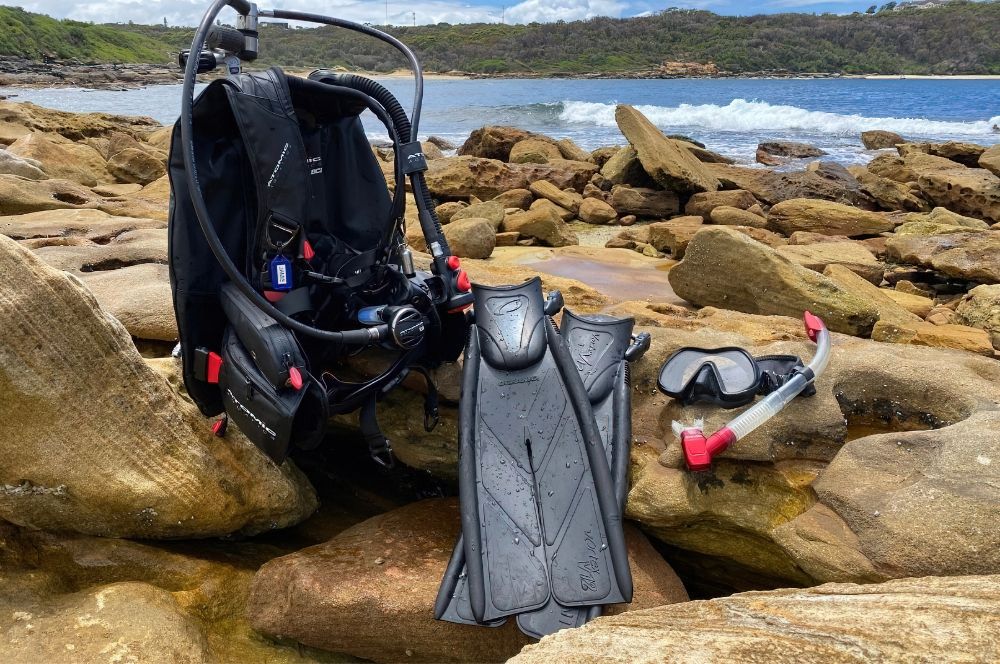
Now that we’ve explored the acronyms related to dive planning and training, let’s gear up and dive into the world of scuba equipment acronyms. These acronyms help divers understand their gear better, ensuring they can use it effectively and safely during their dives.
BCD – Buoyancy Control Device
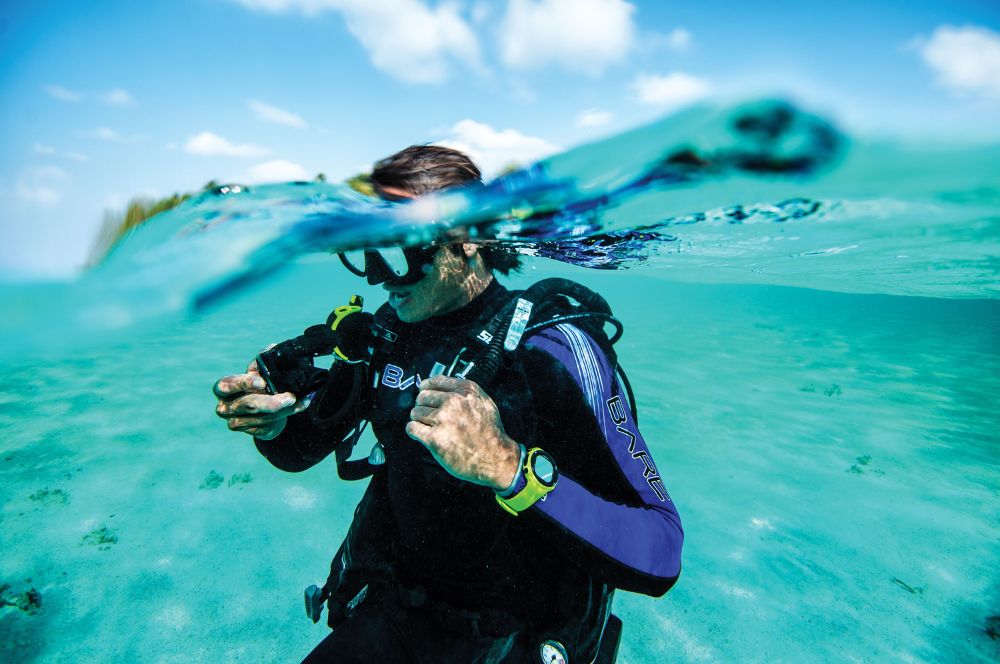
Kicking off our dive into equipment acronyms is BCD, or Buoyancy Control Device. This piece of equipment is a diver’s best friend when it comes to controlling their buoyancy, helping them maintain stability and depth underwater.
The BCD is a jacket-like piece of equipment with air bladders that divers can inflate or deflate using air from their tank. By skillfully controlling the amount of air in their BCD, divers can achieve neutral buoyancy, the sweet spot where they neither sink nor float,.
Mastering the use of your BCD is a critical skill for any diver. It not only helps you conserve energy but also allows you to:
-
Move smoothly and effortlessly through the water
-
Maintain proper buoyancy
-
Ascend and descend safely
-
Control your depth and position in the water
By mastering these skills, you can make your dive a more enjoyable and safe experience.
SPG – Submersible Pressure Gauge
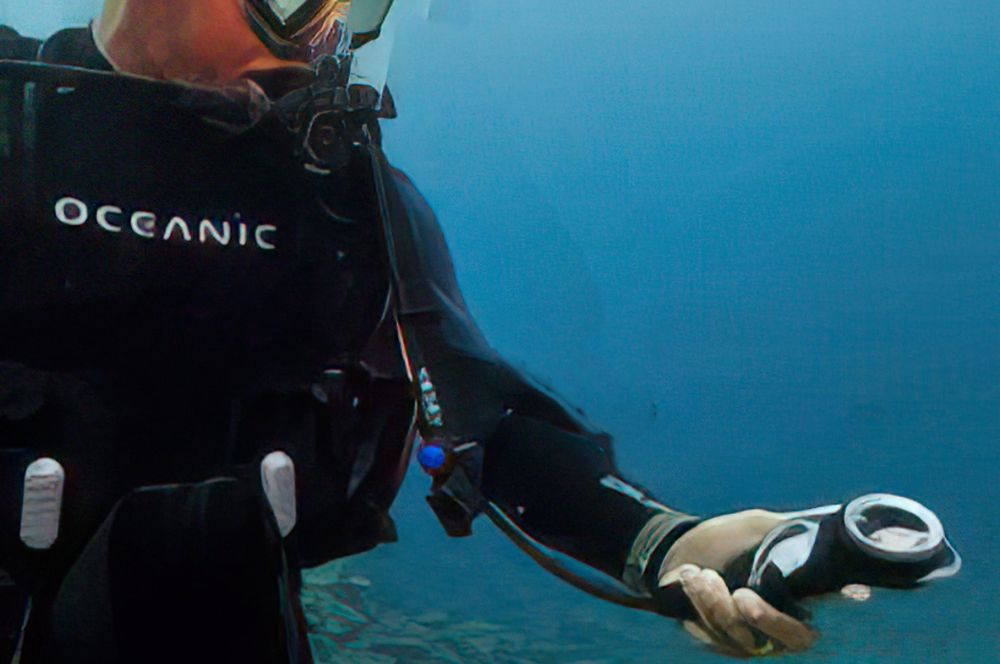
Another crucial acronym in a diver’s gear bag is SPG, short for Submersible Pressure Gauge. This device plays a critical role in monitoring your air supply during a dive, letting you know exactly how much air you have left in your tank.
Regularly checking your SPG is a crucial part of dive safety, ensuring you never run out of air unexpectedly. By keeping a close eye on your SPG, you can manage your dive time effectively and ensure that you always have enough air to make a safe and controlled ascent.
Planning Your Dive with Acronyms
We’ve explored the role of acronyms in equipment and safety checks, but they also play a significant role in planning your dive. Acronyms like RDP (Recreational Dive Planner) and NDL (No Decompression Limit) can be incredibly helpful in planning safe and enjoyable dives.
The Recreational Dive Planner, or RDP, is a tool that helps divers calculate the maximum time they can spend at a particular depth without requiring decompression stops. By understanding your RDP, you can plan your dive to maximize underwater time while ensuring your safety.
Similarly, understanding your No Decompression Limit, or NDL, is key to planning safe dives. Your NDL is the maximum time you can spend at a certain depth without requiring decompression stops. By understanding these acronyms, you can plan your dives effectively, ensuring that you stay within safe limits while exploring the underwater world.
Maximizing Your Dive: Advanced Acronyms for Experienced Divers
For more experienced divers, there are advanced acronyms that can help you maximize your diving experience. One of these is EANx, or Enriched Air Nitrox, a gas mixture that contains a higher percentage of oxygen and a lower percentage of nitrogen compared to regular air. Using EANx allows divers to extend their No Decompression Limit (NDL), enabling them to spend more time underwater and less time decompressing. However, the increased partial pressure of oxygen in EANx does create a higher risk of oxygen toxicity, so divers must be properly trained to use it safely.
By understanding and using advanced acronyms like EANx, experienced divers can push their boundaries and explore deeper and longer. However, with these added benefits come added risks, making proper training and understanding of these acronyms essential.
From Student to Master: The Journey of a Scuba Instructor
For those who dream of turning their passion for diving into a career, the journey from student to master is marked by a series of acronyms. The IDC, or Instructor Development Course, is a significant milestone in this journey, marking the transition from advanced diver to scuba instructor.
The IDC is a comprehensive course that combines essential teaching principles with practical application. During the course, divers progress from the Assistant Instructor (AI) level to the Open Water Scuba Instructor (OWSI) program, equipping them with the skills and knowledge to teach scuba diving to others.
But the journey doesn’t end with the IDC. To maintain their teaching status and effectiveness, scuba instructors are expected to continuously improve their skills, focusing on masterful communication and risk management, alongside keeping abreast of industry developments.
The Language of Scuba: Communicating Underwater with Acronyms
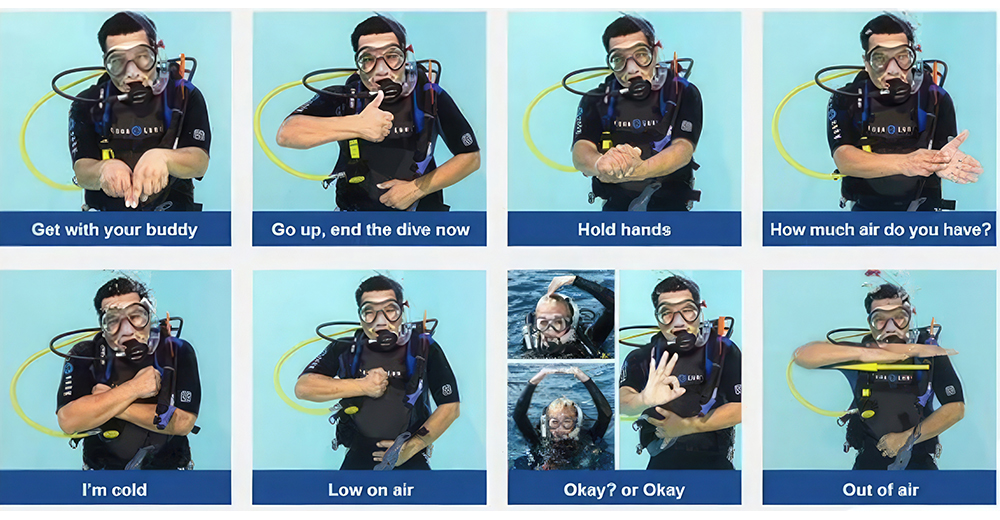
Acronyms in scuba diving are not just about planning and safety. They also play a crucial role in underwater communication, serving as a common language among divers. These acronyms allow divers to communicate important information quickly and efficiently, aiding in coordination and safety during dives.
Acronyms such as DAN (Divers Alert Network), CESA (Controlled Emergency Swimming Ascent), and SMB (Surface Marker Buoy) are commonly used by divers to communicate important messages underwater. And while spoken words may be lost beneath the waves, these acronyms, alongside underwater hand signals, ensure that important messages can be conveyed clearly and effectively.
So, whether you’re planning your dive, checking your equipment, or communicating with your buddy underwater, acronyms are an integral part of the language of scuba. They’re the words we live by as we explore the underwater world.
Summary
As we resurface from our deep dive into the world of scuba acronyms, it’s clear that these abbreviated forms are much more than just shorthand. They’re the backbone of dive planning and safety, the language of underwater communication, and the signposts in the journey from student to master.
Whether you’re just starting your scuba adventure or you’re an experienced diver, understanding these acronyms is essential. They guide us, protect us, and help us make the most of our dives. So, the next time you gear up for a dive, remember: it’s not just about the equipment and the techniques. It’s also about the acronyms that shape our underwater experiences.
Frequently Asked Questions
What is the acronym of scuba?
The acronym of scuba is S.C.U.B.A, which stands for Self-Contained Underwater Breathing Apparatus. This term was coined in 1954 by Dr. Christian Lambertsen for his earlier invention.
What is the acronym scuba in healthcare?
The acronym SCUBA stands for "Self-Contained Underwater Breathing Apparatus," coined by Dr. Christian Lambertsen in 1954. It refers to the apparatus used for device-assisted diving and distinguishes it from free diving or breath-hold diving.
What is the importance of the BCD in diving?
The BCD, or Buoyancy Control Device, is essential for controlling a diver's buoyancy and maintaining stability and depth underwater.
What does the acronym EANx refer to?
EANx refers to Enriched Air Nitrox, a gas mixture that helps divers extend their No Decompression Limit (NDL) for longer underwater stays.
What is the IDC in scuba diving?
The IDC, or Instructor Development Course, is a crucial step in transitioning from a student to a scuba instructor. It is a significant milestone in the journey of becoming a scuba instructor.
Other Posts
-
Exploring the Depths: A Riveting Journey…
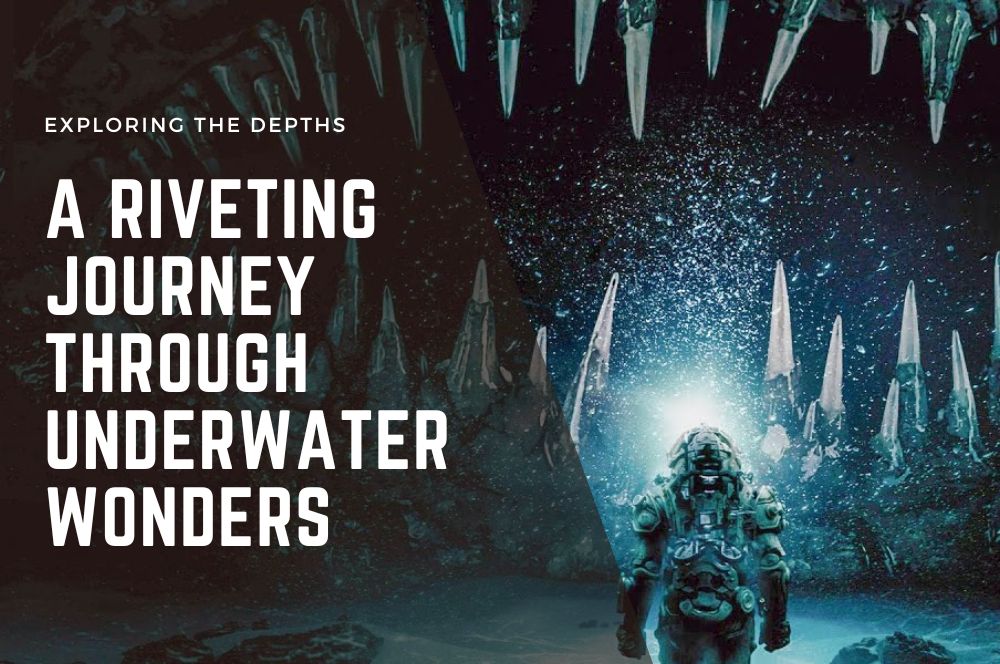
Exploring the Depths:…
Exploring the Depths: A Riveting Journey Through Underwater Wonders Uncover the hidden world underwater, […] -
Survival Tactics for Open Water: Staying…
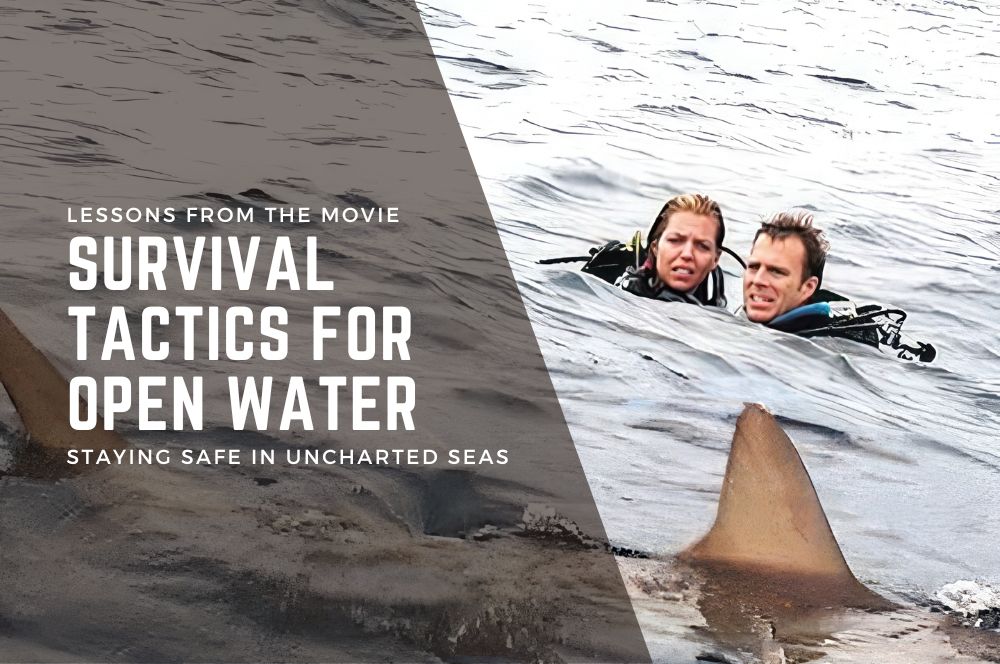
Survival Tactics for…
Survival Tactics for Open Water: Staying Safe in Uncharted Seas When it comes to open water, the line between […] -
Exploring the Abyss: A Comprehensive…
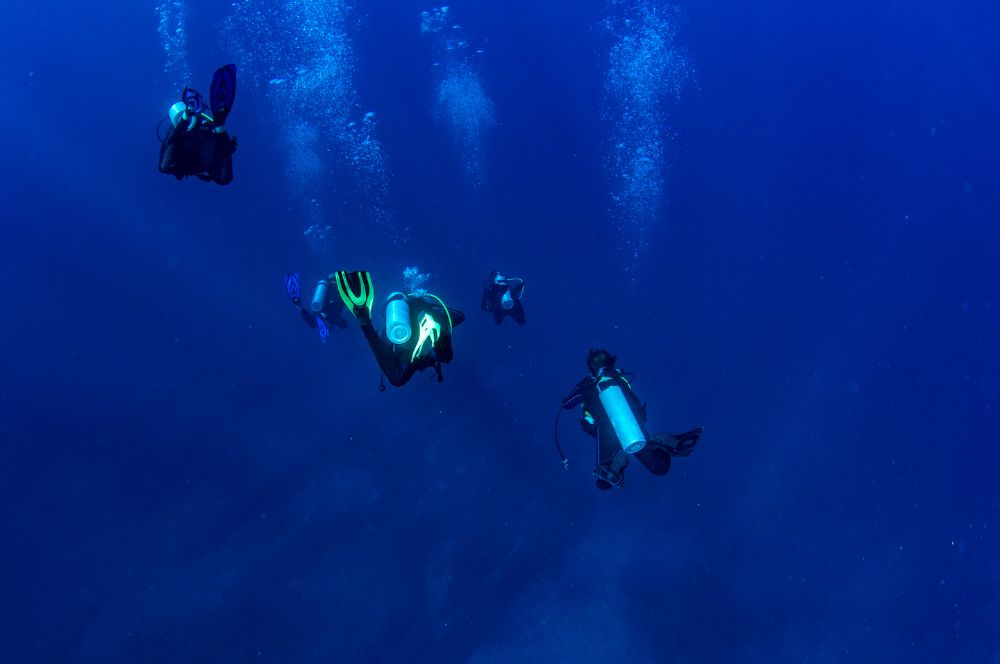
Exploring the Abyss:…
Exploring the Abyss: A Comprehensive Guide to Its Depths and Mysteries Delving into the abyss means exploring […] -
Exploring the Abyss: Unveiling the…
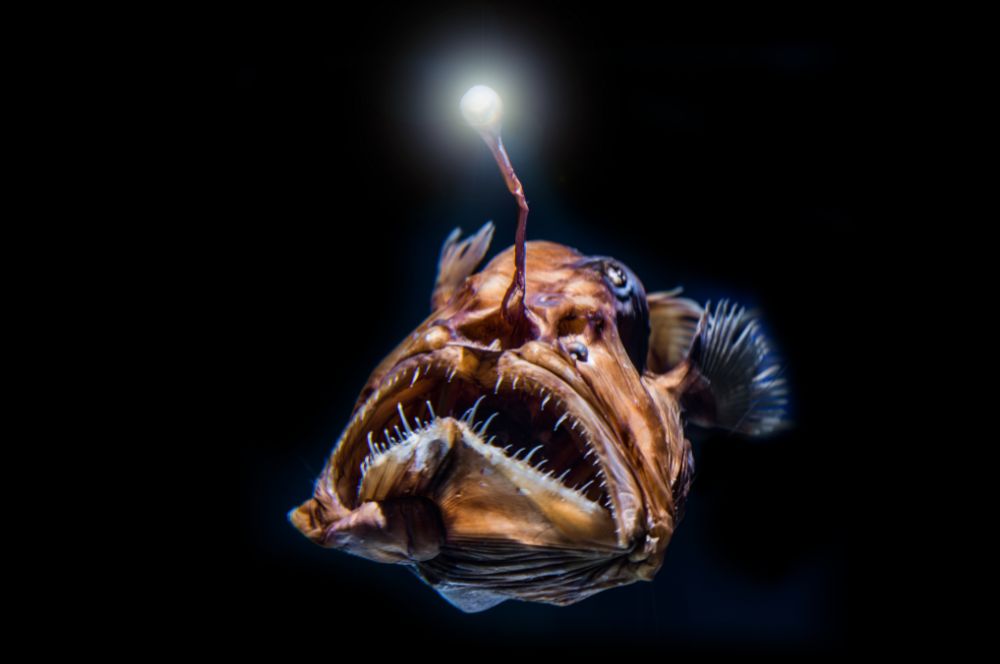
Exploring the Abyss:…
Exploring the Abyss: Unveiling the Mysteries of the Deep Welcome, fellow ocean enthusiasts and curious minds! […]
Recent Posts
